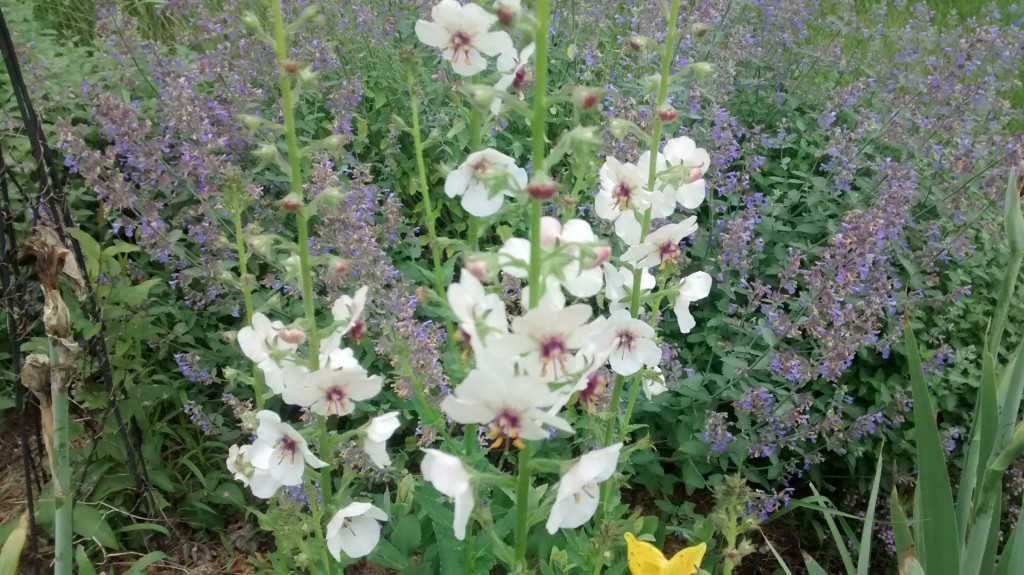There’s some new unexpected members to our garden family of plants this year. It is a group of moth mullein plants.
I’m not really sure how they got there. I figure they most likely hitched a ride as seed in soil from some other plants that I transplanted from someone else’s garden a couple of years ago.
Since moth mullein is a biennial, it takes two years to bloom. The first year for all biennials is a nondescript growing stage which is why I hadn’t noticed the mulein until now. If I was a more tidy gardener, I probably would have pulled them out last year thinking they were some kind of weed seedlings.
Moth mullein is a non-native species so, many people consider them actual weeds. Originally they were brought to this continent as a decorative flower and useful herb — it has some insecticidal properties.
While it may be an immigrant to this country, moth mullein seem to have very little impact on the native ecosystems of our area. They really can’t compete with well-established native plants. However, each plant produces thousands of seeds a year and tilling the soil tends to stimulate their germination. In the garden they may eventually wear out their welcome. In some states they are classified as noxious weeds but not here.
American goldfinches feed on the tiny moth mullein seeds. I saw a pair of goldfinches checking out my plants today. The seeds are not ready yet, so they decided to leave before I could get a photo of them. The seeds are pretty small, about one millimeter long, and can sprout even after laying for a hundred years.
I’m not too worried about the mullein taking over my garden just yet. They are behaving themselves in a very dry flower bed and are only a couple of feet tall. In your garden, if it has fertile soil and is well watered, they might grow twice that size.
Moth mullein is a perfect candidate for an English cottage garden where plants are expected to reseed themselves year after year.
Seeds are available through mail order seed catalogs and online sellers. Of course you can always collect some from the wild since they are not endangered nor invasive in Michigan.
Bob
